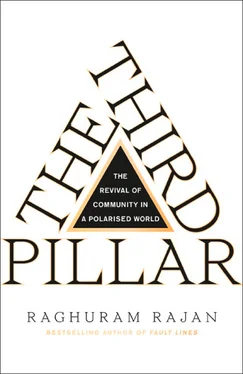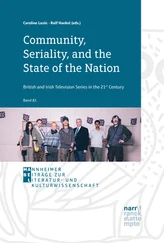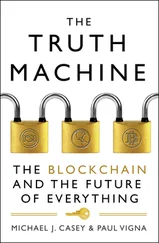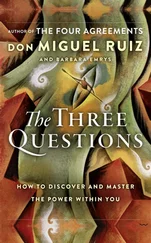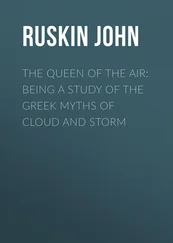1 ...7 8 9 11 12 13 ...30 There are a variety of reasons why these attitudes exist in communities. When economic opportunity is very limited, economic activity might be seen as zero-sum – your gain comes at the expense of mine. The problem is exacerbated when families are at risk of slipping in social status, from the barely self-sufficient but still respectable to the ‘deplorable’, who are dependent on others for subsistence. With few savings and little wealth, many peasants were just one hailstorm or one pig’s unfortunate death away from a winter of deprivation or worse. While families were willing to help one another tide over temporary misfortune, more general public spirit required a degree of comfort with their economic situation that they simply did not have. Given the difficulty of staying afloat economically, villagers’ focus was on providing for their immediate family rather than maintaining a broader public spirit.
This inward focus may actually do public harm. A common example of what Banfield calls ‘amoral familism’ is visible in many developing countries, where people keep their houses spotlessly clean, but unceremoniously dump the garbage collected inside on the street outside. The ultimately self-defeating effects of having unclean and unhygienic public spaces surrounding clean homes can only be explained by extreme public apathy, a fundamental characteristic of dysfunctional communities.
The state, despite being recognisably apathetic, distant, and nonfunctional itself, nevertheless dampened initiative in Montegrano. The faint hope that the government will dig a latrine, pave a road, or discipline school teachers can prevent the local population from organising to do so. In frontier towns in the United States, the community raised a barn or built a road itself, knowing there was no one else who would do it. In dysfunctional communities where the government is closer, the misplaced expectation that the ghost of the inefficient government will eventually appear and do the job crowds out what little private initiative there is.
WHEN DO COMMUNITIES WORK AND WHEN DO THEY NOT?
Communities can be fragile even without becoming dysfunctional. They tend to work best when they are small and have little competition. Community relationships are built when members have limited choices, both at a point in time and over time. Relationships, and thus communities, become more fragile when the available set of choices expands, as when communities grow or when the outside market starts offering more opportunities to community members. Communities can also distort decisions, reducing the incentives for individuals to move, change, or adapt. While this may be the right individual choice, when many members make such choices it can drag down a community.
Too Many Alternatives
Mitchell Petersen of Northwestern University and I were interested in uncovering the effects of the greater availability of potential financial partners on the strength of relationships. 19We examined the relationships between small firms and their banks. Small firms typically find it hard to get finance, and young small firms especially so. Most economic theories would suggest that in areas with greater bank competition, young small firms would be better off.
Interestingly, we did not find this. Instead, in areas in the United States served by fewer banks, and hence with a less competitive banking market, we found small young firms got more bank loans, and at lower interest rates than similar small young firms in areas with many more banks. Importantly, they also seemed to pay back for this help. As the young firms aged, the interest rate they paid on their borrowings moved up faster in areas with few banks, with older firms paying more in such areas than in areas with more competitive banks.
Why were banks more willing to help out young firms in areas where firms had less choice of banking partners? The answer seemed to be that they knew they could build stronger relationships. As in the community relationships described above, a banking relationship is based on give and take over time. Lending to untried young firms is costly because even a small loan requires a fair amount of due diligence by the banker, and the size of the loan does not allow the bank to recoup the cost of the effort invested quickly. Moreover, many small firms fail, adding further to the bank’s costs as such loans have to be written off. A bank therefore takes a chance on an untried young firm only if it is reasonably confident the firm will survive, grow, and give it more profitable business in the future.
In areas with many banks, a successful firm could always renege on its implicit promise to the bank that helped it early on, by replacing it with a new banking partner at better terms. In areas with few other banks, however, the successful firm would likely stay with its original banker because of the lack of choice, and thus would compensate the bank with additional profitable business for the risk the bank took when the firm was young. A bank in such an area, being more confident in the (forced) durability of the relationship, would then be more eager to support young firms.
Thus, relationships seem to be stronger when the members of the community have fewer alternatives, for it gives the members confidence that they will stay mutually committed. An interesting corollary is that communities within a larger economy that are partially ostracised by others may flourish because members build stronger ties within the community. For instance, a disproportionate number of entrepreneurs during England’s Industrial Revolution were nonconformists such as Unitarians and Quakers, who were excluded from civil or military office and from Oxford or Cambridge University. 20The silver lining may have been that, given their exclusion from the larger community, nonconformists trusted one another more to continue maintaining business ties, with marriages eventually cementing the community links that provided initial business finance and business partners. Not only was entrepreneurship one of the few attractive career outlets that was not proscribed to capable Quaker youth, many a budding entrepreneur got help from others in the community as he started out.
In sum, in a small community, not only am I assured that those I help will stay committed to me, but I also know if I don’t help someone in deep trouble, my community may shrink and leave me worse off. In a small community, therefore, everyone has a stake in everyone else’s well-being. We are spoiled for choice as the community grows, which could hurt the community. 21
Relationships also work better if partners interact over multiple activities – if one’s neighbour is not just a source of the odd gardening tool but also helps deliver our child, we are likely to have stronger bonds. However, this requires the community not to have specialists, else most of us would prefer our child be delivered by a professional midwife or gynecologist. There is no point specialising as a midwife if one is to serve a community with only a handful of women of childbearing age, but it makes more sense if there are hundreds – as Adam Smith famously wrote, ‘the division of labour is limited by the extent of the market’. As the community grows larger, therefore, we can call the professional midwife when a child is being born and the professional fire service when a cat is stuck up a tree, instead of our neighbour. Members have more choice, and the quality of goods and services they have access to increases, but the breadth of interactions that take place between members narrows. This social distancing or alienation once again diminishes the strength of relationships and the value of community.
Members could try to preserve a sense of community as it grows larger and more anonymous, urging everyone to take into account community benefits in deciding whether to transact locally or in the larger marketplace. They then run into the free-rider problem. We may all benefit from having a local bookstore, where we can browse through books before buying, and meet for coffee or for book events. It may well be that the associated benefits of building community through purchases from the local bookstore outweigh the lower price from ordering more cheaply online. However, if everyone else does their purchasing locally, the bookstore survives, leaving me free to cheat and patronise the cheaper online bookseller. The anonymity of a larger community will make individual transactions harder to police. When everyone acts in a rational self-interested way, the neighbourhood bookstore closes down, to the detriment of all.
Читать дальше
